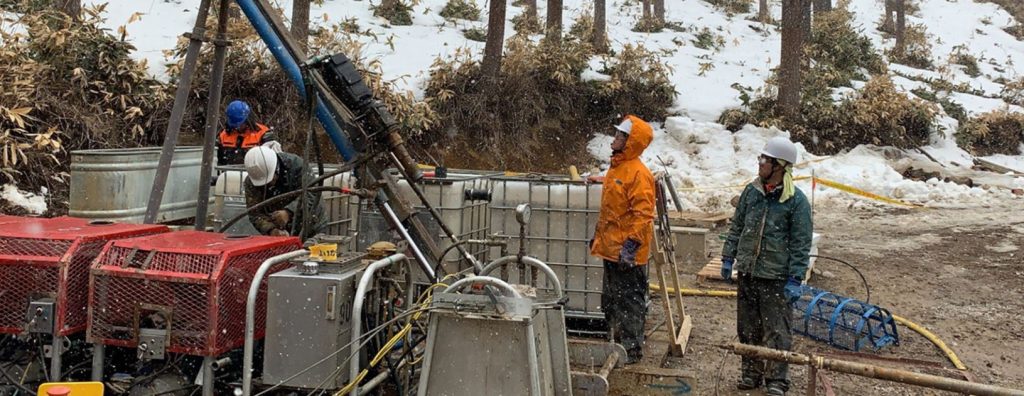Bemetals drills 6.42 g/t gold over 11.50 metres at Kato, Japan

Bemetals Corp. [BMET-TSXV; BMTLF-OTCQB] reported its first assay results for its ongoing diamond drilling program at the Kato Gold Project in Hokkaido, Japan. Bemetals plans to complete at least 1,250 metres of additional drilling during this initial campaign and will release their assay results in the coming months.
Highlights of core drill hole KT22-11 included 11.50 metres grading 6.42 g/t gold, including 8.70 metres grading 7.80 g/t gold, including: 4.52 metres grading 11.88 g/t gold. This new hole extends the targeted high-grade vein zone by some 60 metres along strike. Additional drill hole assay results are expected to be released in the coming months.
Reported widths are drilled core lengths as true widths are unknown at this time. Based upon current data it is estimated true widths range between 55% to 65% of the drilled intersections.
John Wilton, President and CEO, stated, “We are pleased with these initial drill hole assay results from our Kato Gold Project on Hokkaido in Japan. The results from hole KT22-11 represents an approximate 60-metre extension to the strike length of the historically drilled high-grade vein zone which was last drilled in the early 1990s by MMAJ, the Japanese state agency. At this point, we believe there is good evidence that this intersection pierced the interpreted upper area of this vein zone and our second hole which is currently being drilled, is aiming to test a further strike extension of this high-grade vein zone and test other vein targets.”
During a recent inspection of available drill core at the Kato Project, including hole KT22-11, Dr. Richard Sillitoe, a world-renowned economic geologist, also an expert on this style of epithermal gold deposits, concluded, “Near-paleosurface and textural features would suggest that much of the historical drilling intersected the relatively shallow parts of the gold system and, based on similar epithermal deposits globally, downward vein extensions and grade continuity seem likely.”
Wilton continued, “Given these new high-grade gold drilling results, integrated with the historical drilling data, and the evolving geological understanding of the property, we are increasingly excited by the potential to build a significant gold resource at the Kato Project.”
This year Bemetals plans to complete an approximate 1,500-metre drill program at the Kato Gold Project. Hole KT22-12 is currently underway and is targeting additional strike extension of the high-grade vein zone drilled in hole KT22-11, and to test other vein targets.
Due to this improving understanding of the Kato geology, and gold mineralization there is also increased potential to also extend the high-grade veins a significant distance along strike.
The KT22-12 drill hole is designed to test two vein targets. Based upon current interpretation, the immediate target zones for further high-grade gold veins are indicated. It also shows the exploration potential with existing targets, to test the Kato gold system at significant distances to the southeast.
The Kato Project is located within a sparsely populated area of Hokkaido yet it is still in close proximity to infrastructure such as sealed roads and power lines, and has access to supplies and services at the nearby town of Kamishihoro.
From 2018-2020, Kazan Resources, acquired by Bemetals in 2021, drilled several holes at Kato that intersected a zone of hydrothermal breccia near the adjacent main alteration target vein. Their results included hole KT19-02A which returned a number of zones of gold mineralization such as 14 metres grading 2.10 g/t gold. In 2020, drilling intersected over 50 metres of clay alteration, hydrothermal breccia, vein breccia, stockwork, and banded quartz-adularia low sulphidation epithermal veins in hole KT20-010. That hole intersected 58.9 metres grading 0.76 g/t gold, including 7.4 metres at 2.99 g/t gold, and ended in 2.8 metres grading 3.1 g/t gold.
Bemetals has established itself in the gold sector with the acquisition of a portfolio of wholly owned exploration projects in Japan.
